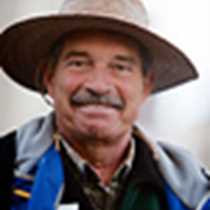Yasha Island and Saginaw Bay, Southeast Alaska
You will always find rough waters at the conjunctions of rivers or large masses of water where there are strong tides or currents. This is the case with Chatham Strait and Frederick Sound in southeastern Alaska. So this is exactly where we began the day observing humpback whales feeding in big groups or pods. During the morning we enjoyed numbers of these adult and young behemoths even at the incredible feeding behavior of bubble-net feeding. In this case, the whales create a circle of bubbles continuously under the schooling fish, which encircle and entrap them. Herring and lance are eaten as the whales swim through this enormous mass of fish and water, engulfing it all! Up to the surface they race, emerging with enormous, cavernous mouths open, only to almost completely close them and squeeze the water out through their baleen. The trapped prey is then swallowed.
During these observations we saw a good number of enormous Steller sea lions on the rocky beaches of Yasha Island. The heavy morning mist fell slowly on these grumbling beached pinnipeds and evaporated, creating a fog cloud. On we traveled into Frederick Sound proper, where again we met humpback whales in groups of five or six, lunging at fish masses on the surface. There must have been 20 whales around us!
So we stayed in their vicinity for more than an hour and eventually headed on to our afternoon activities at Saginaw Bay on Kuiu Island. In a slight drizzle that did not damper our enthusiasm, we had kayaking and hiking along the beach, as there are no paths into the dense forest and between the high limestone cliffs of this part of the island. During the Permian Age, some 255 million years ago, one of the so many terranes that eventually formed Alaska was partly submerged in the warm ocean. Great masses of calcium carbonate were deposited on it to eventually emerge from the ocean and become cliffs. During its deposition, different marine animals died and their remains found their way to the shallow ocean bottom, where they were covered in silts and sands, fossilizing them. Given that this is a family voyage, it was special to see everyone enjoying the scientific nature of the visit, juniors and seniors alike.
Today we walk along the beaches, recognizing many fossils such as corals, crinoids or sea lilies, brachiopods, and dozens of other mollusks. But special among them are the giant foraminifera or fusulinids, quite common among the colorful rocks forming the beach.
You will always find rough waters at the conjunctions of rivers or large masses of water where there are strong tides or currents. This is the case with Chatham Strait and Frederick Sound in southeastern Alaska. So this is exactly where we began the day observing humpback whales feeding in big groups or pods. During the morning we enjoyed numbers of these adult and young behemoths even at the incredible feeding behavior of bubble-net feeding. In this case, the whales create a circle of bubbles continuously under the schooling fish, which encircle and entrap them. Herring and lance are eaten as the whales swim through this enormous mass of fish and water, engulfing it all! Up to the surface they race, emerging with enormous, cavernous mouths open, only to almost completely close them and squeeze the water out through their baleen. The trapped prey is then swallowed.
During these observations we saw a good number of enormous Steller sea lions on the rocky beaches of Yasha Island. The heavy morning mist fell slowly on these grumbling beached pinnipeds and evaporated, creating a fog cloud. On we traveled into Frederick Sound proper, where again we met humpback whales in groups of five or six, lunging at fish masses on the surface. There must have been 20 whales around us!
So we stayed in their vicinity for more than an hour and eventually headed on to our afternoon activities at Saginaw Bay on Kuiu Island. In a slight drizzle that did not damper our enthusiasm, we had kayaking and hiking along the beach, as there are no paths into the dense forest and between the high limestone cliffs of this part of the island. During the Permian Age, some 255 million years ago, one of the so many terranes that eventually formed Alaska was partly submerged in the warm ocean. Great masses of calcium carbonate were deposited on it to eventually emerge from the ocean and become cliffs. During its deposition, different marine animals died and their remains found their way to the shallow ocean bottom, where they were covered in silts and sands, fossilizing them. Given that this is a family voyage, it was special to see everyone enjoying the scientific nature of the visit, juniors and seniors alike.
Today we walk along the beaches, recognizing many fossils such as corals, crinoids or sea lilies, brachiopods, and dozens of other mollusks. But special among them are the giant foraminifera or fusulinids, quite common among the colorful rocks forming the beach.




